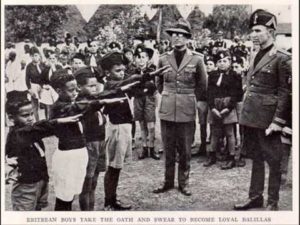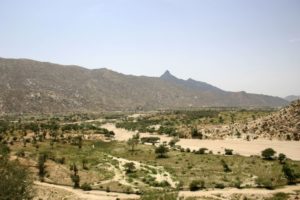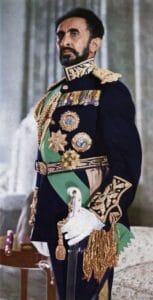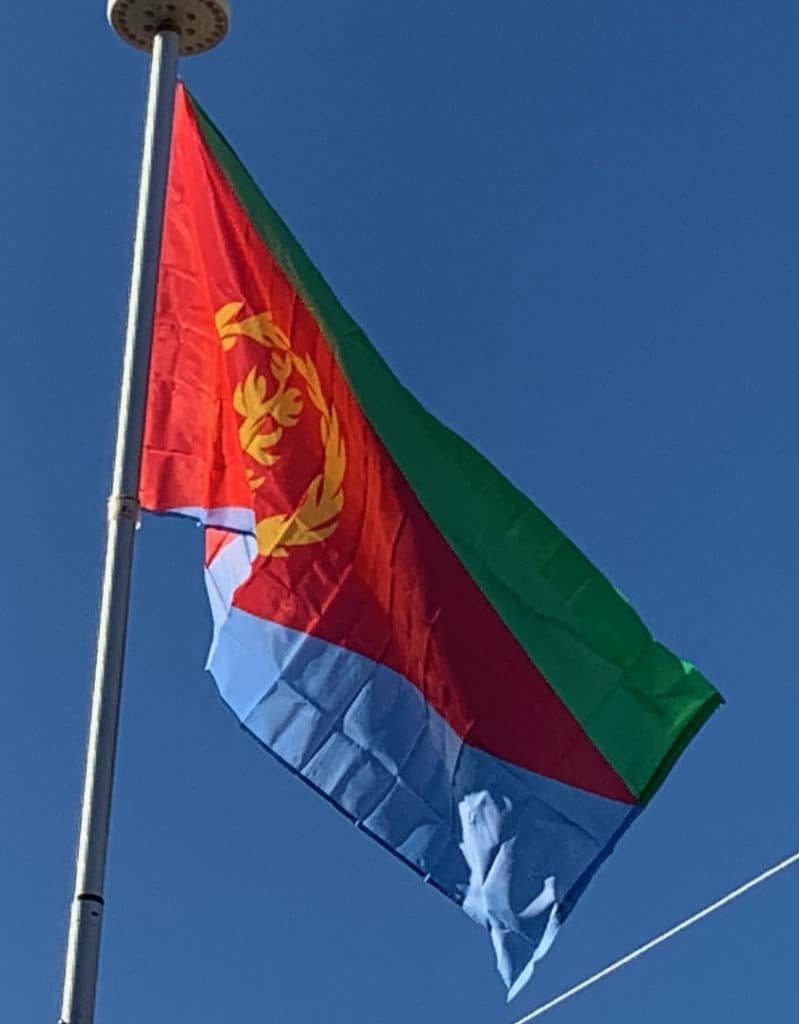
Asmara’s architecture after 1935 was greatly improved to become a “modernist Art Deco city” (in 2017 has been declared a “UNESCO World City Heritage”), featuring eclectic and rationalist built forms, well-defined open spaces, and public and private buildings, including cinemas, shops, banks, religious structures, public and private offices, industrial facilities, and residences (according to UNESCO’s publications). The Italians designed more than 400 buildings in a construction boom that was only halted by Italy’s involvement in WW2. These included art deco masterpieces like the worldwide famous Fiat Tagliero Building and the Cinema Impero.
British Administration:
Through the 1941 Battle of Keren, the British expelled the Italians, and took over the administration of the country.

The British placed Eritrea under British military administration until Allied forces could determine its fate.
In the absence of agreement among the Allies concerning the status of Eritrea, British administration continued for the remainder of World War II and until 1950. During the immediate postwar years, the British proposed that Eritrea be divided along religious lines and annexed partly to the British colony of Sudan and partly to Ethiopia. The Soviet Union, anticipating a communist victory in the Italian polls, initially supported returning Eritrea to Italy under trusteeship or as a colony.
Federation with Ethiopia:
In the 1950s, the Ethiopian feudal administration under Emperor Haile Selassie sought to annex Eritrea and Italian Somaliland.

He laid claim to both territories in a letter to Franklin D. Roosevelt at the Paris Peace Conference and at the First Session of the United Nations. In the United Nations, the debate over the fate of the former Italian colonies continued. The British and Americans preferred to cede all of Eritrea except the Western province to the Ethiopians as a reward for their support during World War II. The Independence Bloc of Eritrean parties consistently requested from the UN General Assembly that a referendum be held immediately to settle the Eritrean question of sovereignty.
Eritrean War of Independence Against Ethiopia 1961–1991:
Following the adoption of UN Resolution 390A(V) in December 1950, Eritrea was federated with Ethiopia under the prompting of the United States. The resolution called for Eritrea and Ethiopia to be linked through a loose federal structure under the sovereignty of the Emperor. Eritrea was to have its own administrative and judicial structure, its own flag, and control over its domestic affairs, including police, local administration, and taxation. The federal government, which for all practical purposes was the existing imperial government, was to control foreign affairs (including commerce), defense, finance, and transportation. The resolution ignored the wishes of Eritreans for independence, but guaranteed the population democratic rights and a measure of autonomy.
Independence:
In 1958, a group of Eritreans founded the Eritrean Liberation Movement (ELM). The organization mainly consisted of Eritrean students, professionals and intellectuals. It engaged in clandestine political activities intended to cultivate resistance to the centralizing policies of the imperial Ethiopian state. On 1 September 1961, the Eritrean Liberation Front (ELF), under the leadership of Hamid Idris Awate, waged an armed struggle for independence. In 1962, Emperor Haile Selassie unilaterally dissolved the Eritrean parliament and annexed the territory. The ensuing Eritrean War of Independence went on for 30 years against successive Ethiopian governments until 1991, when the Eritrean People’s Liberation Front (EPLF), a successor of the ELF, defeated the Ethiopian forces in Eritrea and helped a coalition of Ethiopian rebel forces take control of the Ethiopian capital Addis Ababa.
